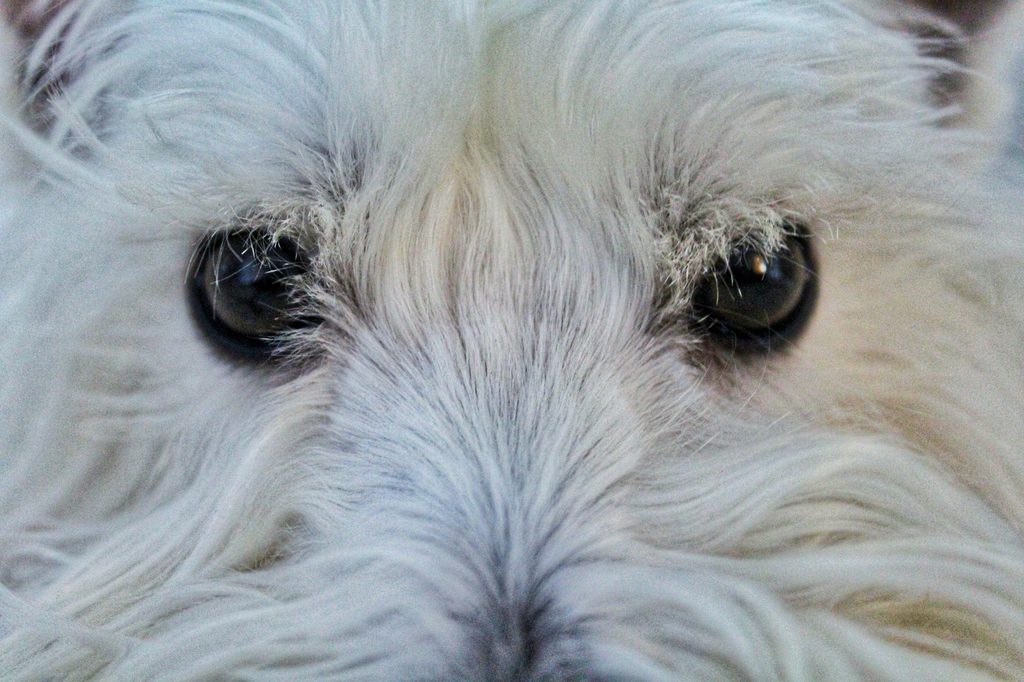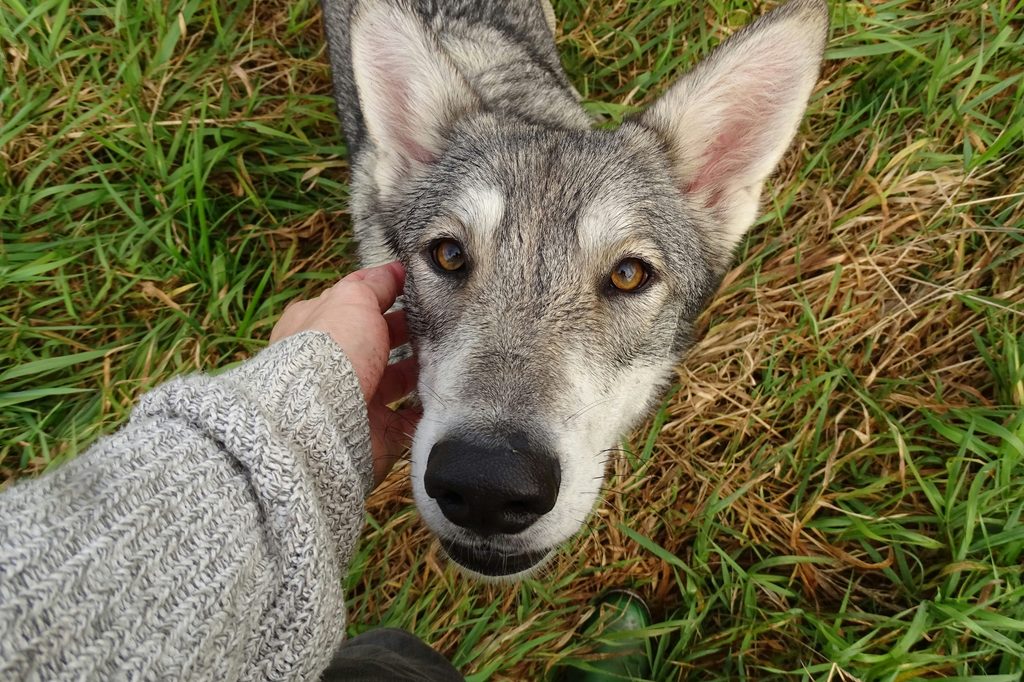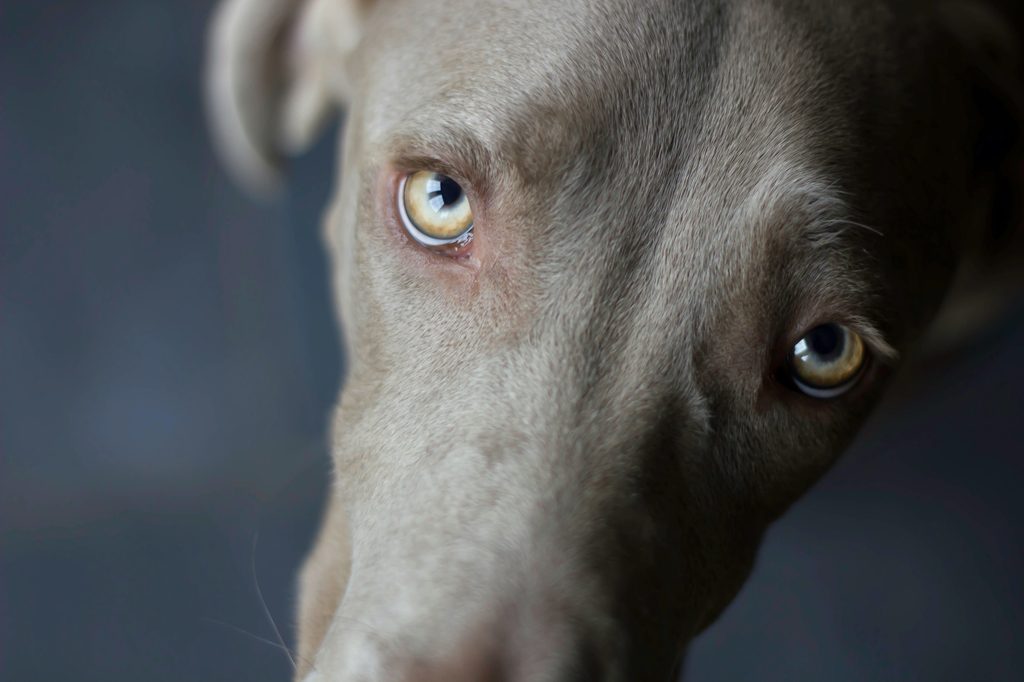Even dog owners still believe many popular myths about dogs, including the myth that dogs see in black and white. Until a few decades ago, even veterinarians believed that our four-legged friends saw the world in shades of gray! It’s unclear why this eye-opening discovery is still misunderstood, but learning how dogs’ eyes work is fascinating, nonetheless.
So, what colors can dogs see? If they don’t see in black and white like previously thought, can they see all colors of visible light like humans can? Let’s look into it! Soon, you’ll have the knowledge to see the world through your furry friend’s eyes.
Can dogs see color?

Many people still believe that dogs have monochromatic vision, but University of California, Santa Barbara ophthalmologist Jay Neitz debunked this theory after a detailed study of canine eye anatomy. In 1989, Neitz’s team discovered that dogs are not entirely colorblind. However, they also can’t see as many colors and shades as humans can due to one major difference in the structure of their eyes.
Eyes 101: Rods and cones
We need to go back to basics to understand how color is perceived. In the retina, which is the part of the eye that is sensitive to light, there are two types of cells that detect light and send corresponding signals to the brain: rods and cones. Rods help an individual distinguish between light and dark, while cones help them distinguish colors.
According to the American Academy of Ophthalmology, the human retina has approximately 120 million rods and 6 million cones. While we don’t know exactly how many rods and cones are in the canine eye, we do know that — unlike humans — the ratio of rods to cones is drastically different. Where humans have 1 cone for every 9 rods, dogs only have 1 cone for every 20 rods. Canines also only have two types of cones present in the retina, whereas humans have three, allowing us to see more colors.
What colors can dogs see?

Neitz and his colleagues not only discovered that dogs can see in color, but also pinpointed which colors they can see. It turns out that what dogs see every day is similar to a common form of colorblindness in humans. Although canines cannot see shades of red, orange, or green, they can see shades of yellow, blue, and brown. Of course, they can also detect light and dark — and therefore shades of gray — thanks to the rods in their eyes.
As Purina explains, this dichromatic vision looks similar to what people with red-green colorblindness experience: “Some colors — like hues of red and orange — may show up as another color to dogs, like yellow. Greens may appear white.” Dogs may also have difficulty distinguishing between different shades of the same color, even if it’s a color they can see.
How does canine vision compare to human vision?

It would be inaccurate to say that dog vision is comparable to human vision, with just a few tweaks in coloration. Dogs are also nearsighted, meaning objects closer to them are clearer than objects further away.
Purina explains, “It’s believed most dogs have 20/75 vision. In other words, they have to be 20 feet away from an object to see it, compared to humans, who can see it from 75 feet away.” Of course, senior dogs or those with medical issues may struggle more than others to see things clearly, even when nearby.
Canine vision also differs from human vision in low light. With a higher ratio of rods to cones in the retina than people have, they can see much more clearly in the dark. Dogs also have a special structure in the eye called the tapetum lucidum that enhances their low-light vision. This mirror-like membrane sits behind the retina, bouncing light back onto it so it can be absorbed more thoroughly. If you’ve ever wondered why your dog never steps on anything or runs into something in the middle of the night, this is probably why.
Canine vision TikTok filter: Is it accurate?
Believe it or not, Neitz is still active in veterinary optometry. The doctor, who now teaches at the University of Washington, even commented on the viral “canine vision” TikTok filters in late 2023.
“Everything looks clear and detailed in those [TikTok] videos, but it wouldn’t look quite as clear to dogs,” he admitted to Scientific American. While the coloring of the filter may be accurate, other aspects of canine vision, such as nearsightedness and advanced low-light vision, are not. However, it can be a fun and fascinating reference for a dog owner interested in seeing what colors their dog sees.
Now that you can imagine the world from your dog’s point of view, you can choose the dog toys and pet products that are most visually appealing to you and to them. This small difference could make your dog more excited to play and interact, so don’t overlook color when customizing your pup’s surroundings.




